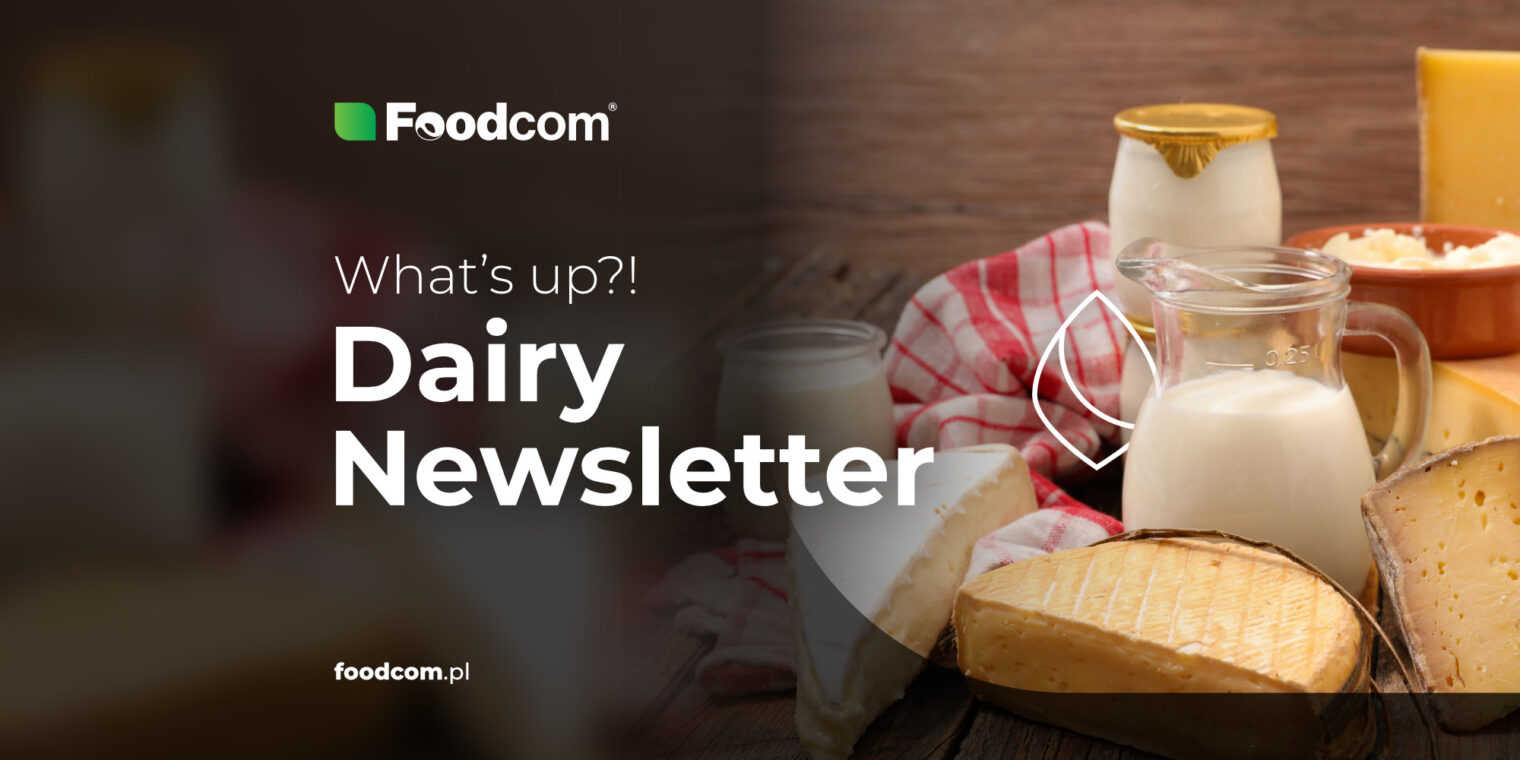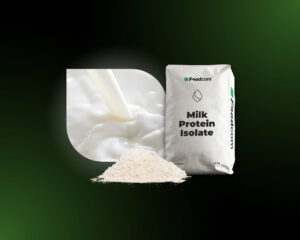Lately, all everyone is talking about is what the market will look like after the short Easter break and what will shape the second quarter of 2023. There’s a good chance you’re reading this issue of the newsletter for the definitive answer. To make a long story short: there’s no telling what will happen. Perhaps that’s because, at the moment, no fortuneteller who predicts the future holds a prominent position in the dairy sector…
We will definitely see a milkflush, which many believe began some time ago but has not yet reached its peak. The immediate future will also be dominated by warehouse occupancy. Current stocks are already a challenge for many, but if you follow what’s happening in the industry, you have probably heard about it. National inflation levels and energy prices will certainly play a role as well. But again, no surprises here; after all, we have been talking about this for over a year.
While we are not fortunetellers predicting the future, we do know a little something about the current market situation (yes, ‘a little something,’ for sure). As we do every week, we have prepared an overview of the current dairy market situation for our newsletter.
Continue reading to learn about this week’s market insights.
With us, you’ll never miss a thing!
Skimmed Milk Powder
A prediction of milk, so far corresponds to reality. More and more products have to be powdered and sold, but the main problem is storage. Suppliers are trying to push goods out of the warehouse, hoping to better valorize the production of those dairy commodities that yield better monetization, such as cheese. There is little interest in cheaper raw material for export customers (outside the EU). At the same time, the price offered by producers for freshly produced raw material varies and is less attractive to buyers than the offers for the previous year’s products that producers currently have in stock.
Butter
Almost all buyers expect the price of the raw material (Cream) to fall. So, if they don’t have to buy the material for production, they hold back. Producers, on the other hand, are not willing to significantly lower the price per kilo of Butter to satisfy buyers. Nevertheless, last week it was possible to buy Butter from non-GFSI-certified dairies at a price of 4.25 EUR/KG. On the other hand, producers with a better developed and better known brand were reluctant to go below 4.40 EUR/KG.
Lactose
The product is in great demand, especially since it is competitive with sugar offered on the market, where there is a problem with the availability of the raw material. Like Polish sugar, Lactose from Poland is competitive with the West, especially the one from Germany and France, and is in high demand from our Business Partners.
Gouda/Edam
Due to negotiations initiated by major retail chains, we have seen an increased interest in Cheese in recent days. The result of this situation was an accepted increase in prices.
Cream
All liquids, including Skimmed Milk Concentrate, are in a stable position. In the current pre-holiday period, Cream is experiencing low but noticeable demand and stable prices. After the holidays, raw milk, Cream and other liquids will fall, which could affect the price of Butter.
What else?
Europe
Ukraine has established special milk collection centers
In the face of Russian aggression, Ukrainian authorities offer farmers the opportunity to sell milk through special collection points. Legislation has been adapted accordingly. According to experts, one of the main challenges in this regard is to ensure compliance with the requirements for the safety and quality of milk and dairy products approved by a decree of the Ministry of Agrarian Policy.
A two-year project to reduce carbon emissions from cows has been completed
Dairy farmers from Cornwall and Brittany worked together on low-carbon practices. The Agriculture bas Carbone for Dairy farms (ABCD) project looked at practices such as changes in cow diet, biodiverse grassland and agroforestry. According to the researchers, the first aspect has the potential to reduce agricultural carbon emissions by up to 10%. So what, now cows are switching to a diet?
Austrian dairy farmers outraged by WWF recommendations
Austrian dairy processors disagree with the organization’s agitation to restrict milk and dairy products in people’s diets. Opponents of such ideas stress that existing eating habits have developed over decades. Moreover, in their view, the Austrian dairy industry offers products that meet the highest standards and the most demanding expectations. In addition, domestic dairy farming shapes the Austrian landscape, promotes biodiversity through a high proportion of grassland, and protects alpine pastures. This is an interesting and rather surprising conflict, it must be said.
The Americas
Michigan State University Extension supports Ukrainian farmers during the war
The institution is offering advice to Ukrainian farmers on how to increase milk production through a virtual presentation. The expert knowledge is intended to help increase Ukrainian farmers’ production during these difficult times. During the ongoing hostilities, access to many resources such as feed, fertilizers, fuel and labor is severely limited. Once again, knowledge is proving to be one of the most powerful and important currencies.
Dumping of milk in Canada sparks strong calls for change
The purchase of milk in Canada is based on a quota system that has led to the widespread practice of dumping surplus raw material for at least 50 years. How much? No one knows at this time because attempts to monitor the scale of this phenomenon are only now being made. What is certain, however, is that it is common. This, in turn, is causing producers and other activists concerned with this issue to urge the government to change this system. This is by far the worst aspect of the current quota system. However, it is difficult to speak of any real chance of change in the near future.
Nestlé and Cargill are joining forces to support sustainable grazing practices
The companies have begun a collaboration with the National Fish and Wildlife Foundation to implement voluntary conservation practices that help combat climate change. Together, they are expected to contribute up to $15 million to the fund. The partnership will bring together private landowners and local conservation organizations to support voluntary land management practices, improve water management and restore wildlife habitat. Quite an interesting crossover episode, isn’t it?
Asia & Oceania
Dairy farmers in New Zealand need to plan their budgets carefully
Forecasts for farm milk prices next season range from $7/kg to $10/kg. Many experts also make predictions between these two values (and of course, each of them is convinced that he is the one who is right…). No one doubts that these are significant differences, especially considering that the season starts in just two months. This time, farmers not only do not know how many liters of milk each cow will provide, but also how much money they will receive for each liter. An unenviable situation.
A major Australian dairy company is recalling products because it fears contamination
Some Fleurieu Milk Company products have disappeared from Australian supermarket shelves because of a risk of microbial contamination. According to the latest information, it is said to be E.coli bacteria. Those who managed to buy the products are expected to receive a full refund. Quite surprising, since E.coli is more what we would expect to find in sodas, right? (Actually, no).
New Zealand’s indebted dairy farmers are in an extremely difficult position
The price of milk is generally down, and as if that were not enough, it is difficult to predict what will happen to it in the coming months. In addition, production costs, especially feed prices, are becoming extremely high. It is difficult to predict any other scenario than that at least some of the farms in the most difficult situation will not survive the current conditions.







